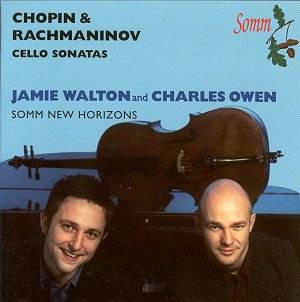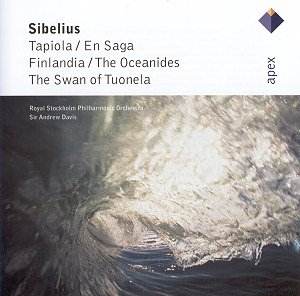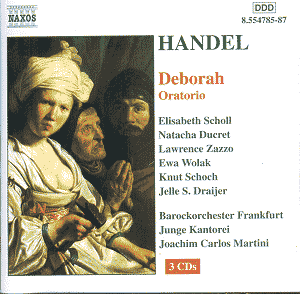 Composer: Frédéric Chopin, Sergei Rachmaninov
Composer: Frédéric Chopin, Sergei Rachmaninov
Works: Cello Sonata in G minor, Op. 65; Cello Sonata in G minor, Op. 19
Performers: Jamie Walton, cello; Charles Owen, piano
Recording: December 2001, Netherhall House, London, UK
Label: SOMM NEW HORIZONS SOMMCD 026
The pairing of Chopin’s and Rachmaninov’s cello sonatas offers a fascinating lens through which to explore two composers whose virtuosity as pianists fundamentally informed their respective compositional styles. Chopin’s Cello Sonata, completed in 1847, marks a poignant moment in his oeuvre, composed for the esteemed French cellist Auguste Franchomme during the twilight of his life. It encapsulates the essence of Chopin’s lyrical gift, transposed for a medium he rarely utilized. By contrast, Rachmaninov’s 1901 Cello Sonata emerges from a more expansive compositional landscape, where he deftly integrates the cello’s voice within a rich tapestry of harmonic and melodic exploration, reflecting his penchant for emotional depth and grandeur.
Jamie Walton’s interpretation of both works is nothing short of exceptional. His technical finesse is readily apparent, particularly in the Chopin sonata, where he navigates the intricate passages with clarity and grace. Walton’s ability to produce a warm, singing tone is matched by his sensitivity to the dynamics of the score; in the slow movement of the Chopin, he expertly scales down his sound to convey an intimate poignancy that resonates deeply. The interplay between cello and piano is a hallmark of this sonata, and Walton, alongside pianist Charles Owen, achieves a remarkable balance that allows each voice to shine. Owen’s piano work is not merely supportive; his part is a formidable counterpart, characterized by an intricate interplay that often mirrors the cello’s thematic material. The nuanced dialogue between the two performers enhances the work’s romantic fervor, drawing the listener into its emotional core.
Turning to Rachmaninov, Walton’s performance captures the composer’s characteristic yearning and intensity. The opening of the Rachmaninov Sonata, with its haunting slow introduction, is imbued with a brooding quality that Walton articulates with great skill. The cello’s lyrical lines soar above Owen’s lush piano textures, creating a vivid soundscape that is quintessentially Rachmaninov. Walton’s technical prowess is particularly evident in the work’s more demanding passages, where his agility and expressive depth allow him to navigate the intricate rhythms and sweeping melodies with ease. The recording quality is commendable, with both instruments captured in a beautifully balanced manner; the piano is neither overpowering nor recessed, allowing for a full appreciation of the sonorous richness of the cello.
This recording stands out in its ability to convey the emotional weight of both sonatas. While there are notable interpretations available—such as Rostropovich’s legendary rendition of the Chopin and Grebanier’s insightful reading of the Rachmaninov—Walton and Owen’s collaboration offers a fresh perspective that is both technically accomplished and artistically compelling. Their commitment to the music is palpable, infusing each phrase with a sense of urgency and passion that invites repeated listening.
The synthesis of technical brilliance and interpretative insight in this recording makes it a significant contribution to the discography of both composers. Walton and Owen’s partnership not only showcases the individual strengths of each performer but also exemplifies the collaborative spirit inherent in chamber music. For those seeking a profound exploration of these two sonatas, this recording is an indispensable addition to the collection, demonstrating the enduring power of these works through the lens of a new generation of musicians.



